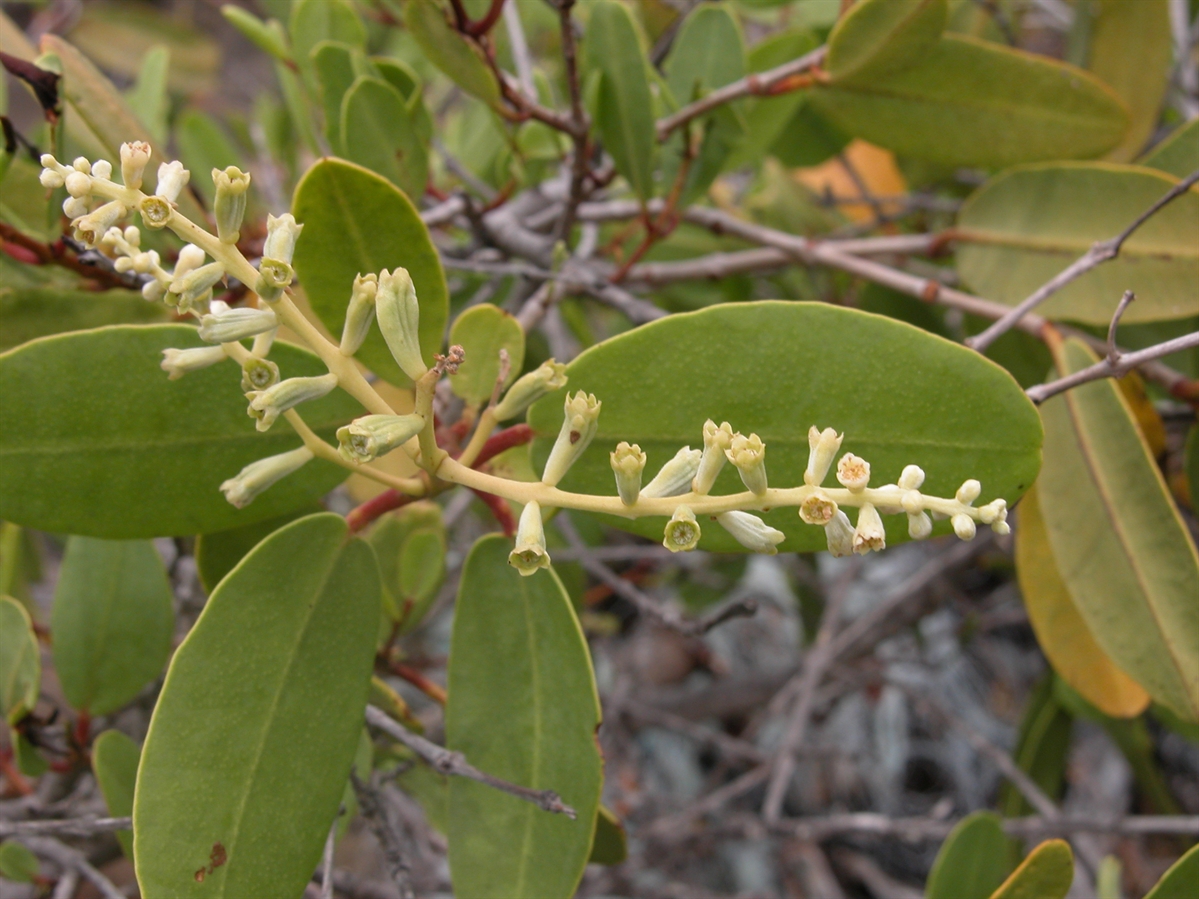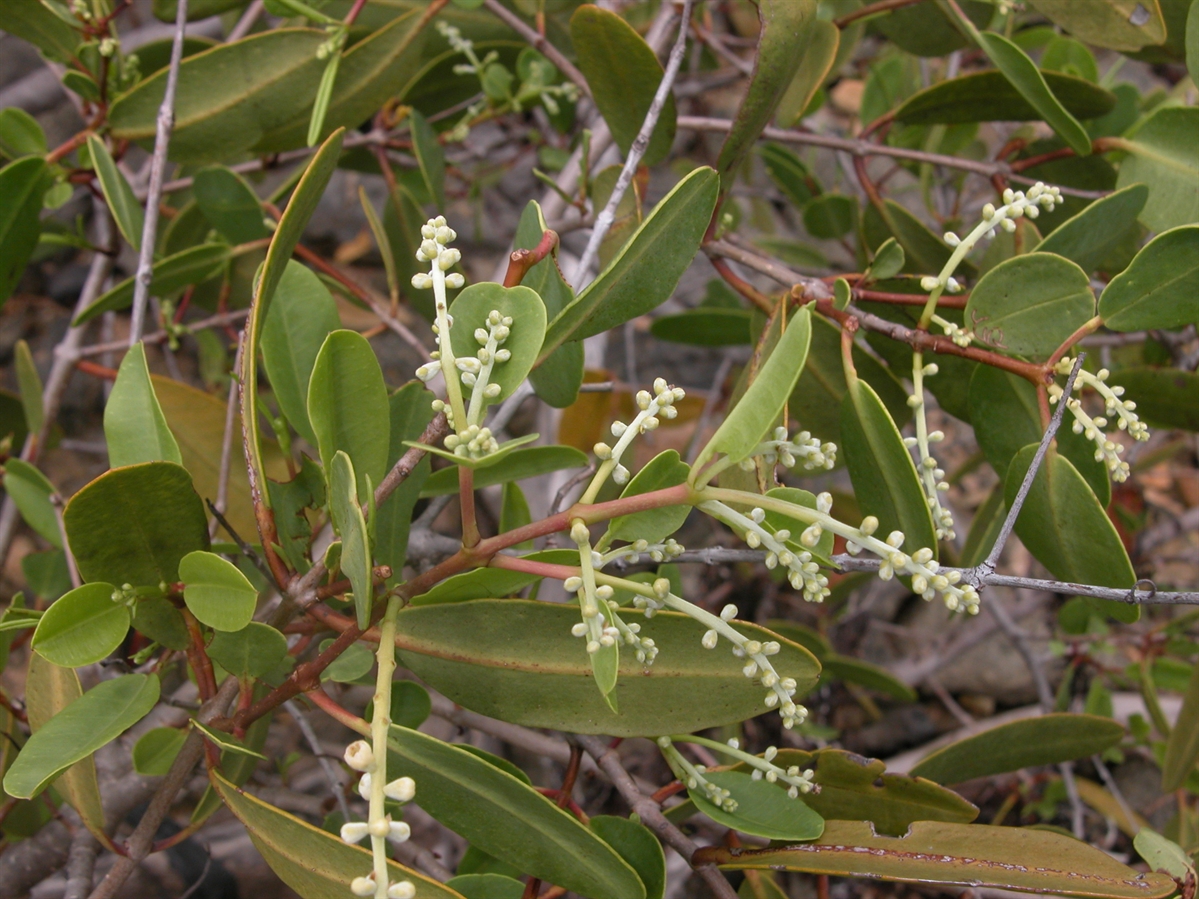Habit: Laguncularia racemosa grows as medium to large trees producing trunks to 50 cm wide. The leaves are arranged oppositely, oval in shape and the petioles having two small glands at the base of the leaf blade. The leaf blades are 3-8 cm long with entire margins.
The complete, perfect, actinomorphic, flowers are arranged in terminal or axillary spikes that are up to 10 cm long. The calyx has 5 fused sepals forming a short tube. The corolla has 5 separate whitish petals. There are 10 stamens. The fruit is an elongate and ribbed drupe at maturity. Each rib containing 1 reddish seed.
Habitat: Laguncularia racemosa grows along the edges of saline environments both coastal and along interior ponds and lakes. It typically occurs inward from other mangrove species rather than directly in standing water.
Distribution: Laguncularia racemosa occurs on all island groupings of the Lucayan Archipelago as well as the Caribbean region, Florida, Mexico, Central America and tropical regions of West Africa.
Cultural/Medicinal/Economic usage: Laguncularia racemosa as with all mangrove species are builders of land. Trapping organic debris before it enters aquatic systems and building up humus. Additionally they protect shorelines during hurricanes. In some areas the flowers are an important source for honey production and historically the bark was used in tanning leather as well as an antiseptic.

